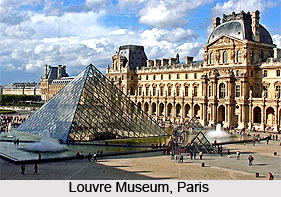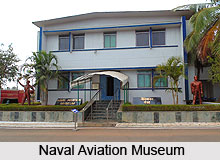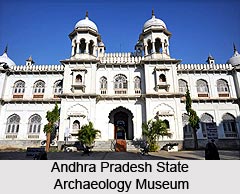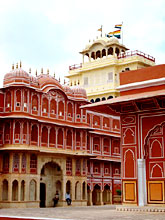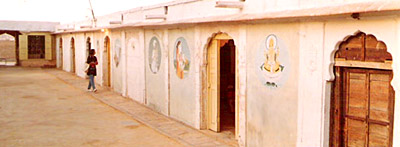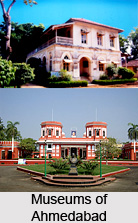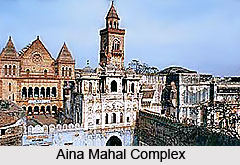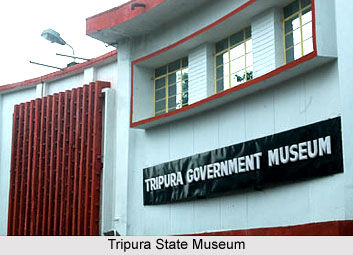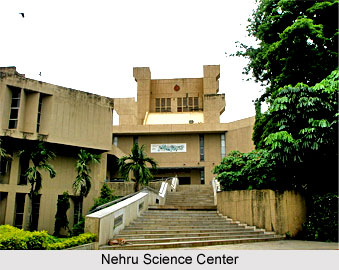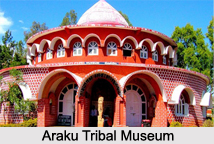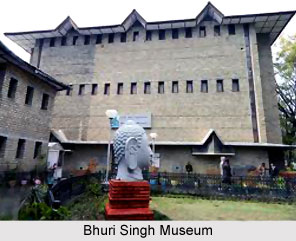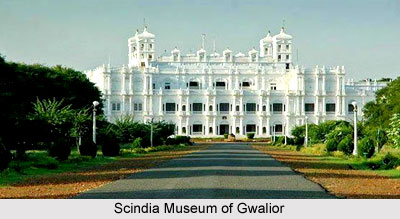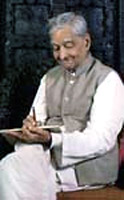 The searching eyes of the Late Dr. Dinker Kelkar, gathered a curious and a wide spectrum of items, and commodities of daily use. It was this massive accumulation, procured by this energetic collector and preserver, which turned out to be the Raja Dinker Kelkar Museum, Pune.
The searching eyes of the Late Dr. Dinker Kelkar, gathered a curious and a wide spectrum of items, and commodities of daily use. It was this massive accumulation, procured by this energetic collector and preserver, which turned out to be the Raja Dinker Kelkar Museum, Pune.
His passion was fuelled by the active assistance that he got from, Shri. Y.B. Chavan , the covalent Chief Minister of Maharashtra , and Shri. P.J. Chinmulgund, the Education Secretary of the State Govt, of that time. Indeed many institutions, state - powers and eminent intelligentsia, have guided the flowering of the reserves into a Museum of recognition.
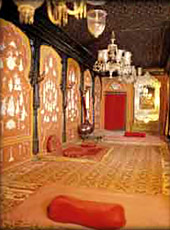 Therefore in 1962, when Dr. Kelkar delivered his deposits to the Department of
Archaeology, Govt. of Maharashtra , it spawned into the proper body of a Regional Museum . This aided accurate exhibition and perfect sustenance of things.
The air of eternal romance envelops the Raja Dinker Kelkar Museum, Pune. The stirring demonstration, in the Mastani Mahal, is reminiscent of the life of the valorous Bajirao Peshawa the first. It beautifully depicts the memorable moments of togetherness, shared by the Peshwa with his dear beloved, Mastani.
Therefore in 1962, when Dr. Kelkar delivered his deposits to the Department of
Archaeology, Govt. of Maharashtra , it spawned into the proper body of a Regional Museum . This aided accurate exhibition and perfect sustenance of things.
The air of eternal romance envelops the Raja Dinker Kelkar Museum, Pune. The stirring demonstration, in the Mastani Mahal, is reminiscent of the life of the valorous Bajirao Peshawa the first. It beautifully depicts the memorable moments of togetherness, shared by the Peshwa with his dear beloved, Mastani.
A portion of the ground floor of the Raja Dinker Kelkar Museum has kept on display splendid Ivory articles, such as Ink-Pots, House-Shrines, Toilet-use things, Games and Playing Cards , named `Ganjeefa` . The 18th century, Parsee man, built of ivory, is a wonderful artifact from South India. Similar is the 17th century ivory model of Sree Ganesh , imported from 17th century Nepal.
Variety is the hallmark of the Raja Dinker Kelkar Museum, Pune. Thus the `L` passage of the ground floor, situated at the entrance , is decked with the aesthetically appealing doors and windows endowed with their panels and brackets with right arrangements on 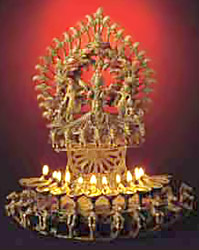 the wall. The settings should be such so that it creates the appearance of one standing in front of the original dwelling from where these doors specifically had been amassed . Not only the entrance area, but also the exit zone has a door gallery to project. The exit region of the Raja Dinker Kelkar Museum, Pune, is furnished with exquisite doors and windows of temples and abodes , belonging to several sites of India. Raja Dinker Kelkar museum, thus started highlighting the importance of interior-designing through its discrete display of doors and windows.
the wall. The settings should be such so that it creates the appearance of one standing in front of the original dwelling from where these doors specifically had been amassed . Not only the entrance area, but also the exit zone has a door gallery to project. The exit region of the Raja Dinker Kelkar Museum, Pune, is furnished with exquisite doors and windows of temples and abodes , belonging to several sites of India. Raja Dinker Kelkar museum, thus started highlighting the importance of interior-designing through its discrete display of doors and windows.
The artistically attractive stone sculptures, demonstrated along or affixed against the wall , fill the visitors with awe.
A part of the 2nd floor displays a broad and scintillating range of the Bronzes specimens, Lamps of many kinds, the Tambool objects and the writing stuffs, attached with highly embellished Inkpots. Mind-blowing are the Sun Lamp, picked up from Nepal and the Kadamba. tree Lamp with the Raasa-Lila (love-activity) represented on it .
In the Vanita Kaksha of the New Building of the Raja Dinker Kelkar Museum, stationed at the ground floor, an inquisitive visitor can very well be offered a glimpse of the 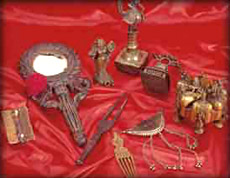 everyday life of an Indian woman. The Vanita Kaksha (Women`s Department) shows the application of Vajris i.e. foot cleaners, the mirrors, the combs, the collyrium-boxes and the Kumkum caskets in the daily life of an Indian woman.
everyday life of an Indian woman. The Vanita Kaksha (Women`s Department) shows the application of Vajris i.e. foot cleaners, the mirrors, the combs, the collyrium-boxes and the Kumkum caskets in the daily life of an Indian woman.
The small room, coming across a visitor`s way, prior to his admittance into the Gujrat Gallery, of the Museum , reveals an array of multifarious Indian Paintings of different kinds , hailing from the 17th till the 19th Century. The storehouse involves i.e. Glass Paintings , cloth paintings, paintings on parchment, paintings on leather and paper, etc.
The rest of the 1st floor is devoted to a marvelous treasure of the Musical Instruments, of diverse types, especially of beating musical implements, such as the drums. The most magnificent of the beating instruments is the "Khol" of Keshavrao Bhole and that of the blowing instruments is the melody-wooing "Flute of Pannalal Ghosh" . Besides, among the string instruments the "tanpura of Sawai Gandharva" and "Mini Tanpura of Bal Gandharva" and also the Taar Shehnai of Madukar Golwalkar deserve mention. .The Museum-authorities, have attested their subtle appreciation of music , by playing cassette-recorded music as a natural accompaniment with these instruments. Even articles of Tribal art, Hubble-Bubbles and pipes, have been provided a space in the Musical Instruments Gallery .
The third floor of the Raja Dinker Kelkar Museum, is dedicated for the purpose of organizing special Exhibition . These exhibitions bring to the limelight those rare objects which otherwise remain relegated to the background on regular visits. One such special exhibition, for example has been held on armours and Tulsi Vrindavans. There are facilities of availing of both education and entertainment for children dealing with toys and masks.
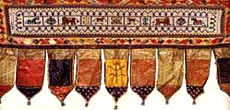 India is the land of rich variety in textiles, costumes and accessories, crafted and flaunted by people belonging to different cultures and traditions. The second floor of the Textile gallery showcases textiles from different parts of the country. For instance the gorgeous paithanies , textiles of crowning glory from Paithan of Maharashtra , bestowed upon with dazzling Jari-decorations and, the Rabari garments , vocal about the folk-heritage in Gujarat, Kutch and Kathiawad are among the textile-wonders of India, presented in the museum.
India is the land of rich variety in textiles, costumes and accessories, crafted and flaunted by people belonging to different cultures and traditions. The second floor of the Textile gallery showcases textiles from different parts of the country. For instance the gorgeous paithanies , textiles of crowning glory from Paithan of Maharashtra , bestowed upon with dazzling Jari-decorations and, the Rabari garments , vocal about the folk-heritage in Gujarat, Kutch and Kathiawad are among the textile-wonders of India, presented in the museum.
The Raja Dinker Kelkar Museum, Pune, accommodates a valuable library . The library contains books on Art, History , Architecture and Conservation , indispensable to learn and perceive the culture tradition of the country in terms of the expositions .
Conservation and preservation of display items is mandatory for keeping the things in the museum updated and in right condition. And this affair is taken care of by the conservation Laboratory , possessing modern tools and helping in adopting required methods to reach the goal.
The Museum has been assigned a Board of Management by the Education Department of the state Government, so as to look after its issues of development and administration since 1975. This has been as per as the settlement concluded between the late Dr. Dinker Kelkar Museum, and the State Government.
The Board of Management of the Raja Dinker Kelkar Museum, Pune , has embarked on future plans for the betterment of the Museum . Some of the steps, already taken are, special exhibitions on Paithan Paintings; recording of Video Cassettes on Museum and airing of lectures with slide show for better emphasis on the vital ideas; taking up a Five-year programme during the Birth-day Centenary of Late Dr. D. G. Kelkar(10th Jan 1996 ) . This new venture incorporates New Building erection, Publication, increasing Museum Funds, organizing lectures and seminars and so on.
To sum up, the Museum in the recent times inhabit a remarkable collection of 20,000 objects, classified into 40 sections . The Museum resides in a three storey building, is situated at 1377 and 1378,Shukrawar Peth in Pune. It is closed on gazetted holidays. It can be accessed from 10.00 a.m. to 5p.m. , on any day.
The Raja Dinker Kelkar Museum, has broadened the scope of art-education and entertainment, in India, by inserting things, which received the halo of prominence, than ever before.
